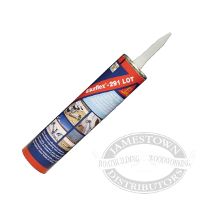Martiangod wrote:Treeviews articles on trees self repairing got me thinking.
When a tree is limbed, we seal the cut.
Dang...where did my brilliant reply go to?!
Here's the short one...less brilliant

Biological beings heal...they replace wounded tissues with new tissues.
Botanical beings seal...they grow new tissue over the wounds, the wounds never go away or change.
I'll stop now unless there's a request for more.
Dr. Shigo's research started out with the goal to find a better wound sealer. His conclusion lead to Modern Arboriculture and a better understanding of wounds and decay in trees. One of the things that he found was that there were no wound dressings/treatments that helped trees to isolate decay.
As a result of his research we got to stop using messy tree paints. this was in the mid-70s. So...almost 40 years ago we, arbos, stopped using sealers. No criticism...but sometimes it takes a while for the message to get out, sorry.
The decay nasties that attack wood are different than the ones that attack lumber. The effect is much the same though. There are treatments that can stop/reduce decay in lumber...but not for wood...yet, anyway!
this is a great thread!
Tom




